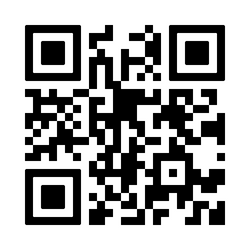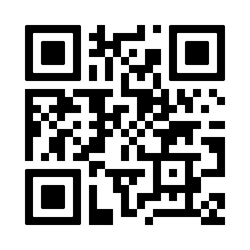
How to Read a Nutrition Label: Avoiding Hidden Sugars and Salts

How to Read Nutrition Labels: Spot Hidden Sugars and Sodium
Picture this! You're standing in the grocery aisle, determined to make healthier choices for you and your family. You pick up what looks like a healthy snack, but you might not be able to read the nutrition label. Sound familiar? You're not alone. Many of us want to eat better, but reading the food labels can feel overwhelming and confusing.
Healthy Master is here to empower you with the knowledge and confidence to decode those labels like a pro. No more second-guessing, no more falling for marketing tricks—just clear, actionable guidance to help you make informed decisions for your well-being.
Let’s take control of your snacking habits! Browse our curated collection of healthy snacks online with Healthy Master—where every ingredient is carefully chosen and clearly labeled for your peace of mind!
The Foundation: Mastering the Serving Size
Before going further, let's talk about the most important number on any nutrition label: the serving size. This little detail is where many of us get tripped up, and frankly, food manufacturers sometimes count on this confusion.
Here's the thing—all those numbers on the nutrition panel are based on that specific serving size, not the entire package. This means if a bag of chips says it contains 150 calories per serving, but the bag contains three servings, you're looking at 450 calories if you eat the whole thing. And let's be honest, how many of us stop at one-third of a small bag of chips?
Food companies sometimes use unrealistically small serving sizes to make their products look healthier than they are. A muffin might be labeled as two servings, or a bottle of juice might claim to serve 2.5 people. The key is to always check what you'll actually consume and do the math accordingly.
Your action step here is simple but important: before you look at any other number on that label, figure out how much you're realistically going to eat. Then multiply all the nutritional information by that amount. This one step alone will give you clarity.
How to Avoid Hidden Sugars?
One of the biggest villains in processed foods: hidden sugars. These sneaky sweeteners don't always go by the name "sugar," and they're everywhere—even in foods you wouldn't expect to be sweet.
Decoding the Ingredient List for Sneaky Sugars
Your detective work starts with the ingredient list, where items are listed by weight from highest to lowest. If you see sugar-related ingredients near the top of the list, that's a red flag that you're dealing with a high-sugar product.
But here's where it gets tricky—sugar has more aliases than a secret agent. Watch out for maltodextrin, which is essentially sugar in disguise. Then there's the corn syrup family: high-fructose corn syrup, corn syrup, and corn syrup solids. These are all just different forms of concentrated sweetness.
Pay special attention to anything ending in "-ose"—dextrose, fructose, sucrose, glucose, and maltose are all forms of sugar. Even substances that seem healthful can be deceiving. Fruit juice concentrate, molasses, honey, and agave nectar might be more natural than white sugar, but they still impact your blood sugar in similar ways.
The impact of excess sugar on your health goes far beyond just calories. Those sugar highs are followed by energy crashes that leave you feeling tired and craving more sweets. Over time, consistently high sugar intake can contribute to weight gain and increase your risk of developing chronic diseases like diabetes and heart disease.
Making Healthier Choices: Look for Healthy Snacks
This is where choosing truly healthy snacks becomes essential. Instead of reaching for processed options loaded with hidden sugars, look for whole, unprocessed foods or healthy snack options with minimal added sugars. When you shop for healthy snacks online, you have the advantage of comparing labels easily and finding options that align with your health goals.
The Salty Surprise: Finding Hidden Sodium
If hidden sugars are the sneaky villains of the nutrition world, hidden sodium is their equally deceptive partner in crime. The shocking truth is that sodium isn't just lurking in obviously salty foods—it's hiding in sweet pastries, breakfast cereals, bread, and even some fruits and vegetables that have been processed.
Sodium in Surprising Places: Beyond the Salt Shaker
You might be surprised to learn that many processed meats, sauces, condiments, and even seemingly innocent items like instant oatmeal can be sodium bombs. Some sweet baked goods contain more sodium than you'd find in a serving of salted nuts. This is why reading labels becomes so important—your taste buds can't always detect all the sodium that's been added during processing.
How to Read the Sodium Content on the Food Label
When examining the nutrition label, look for the sodium line and pay attention to both the milligram amount and the Daily Value percentage. As a general rule, anything with less than 140mg of sodium per serving is considered low sodium—this is what you want to aim for when possible.
The Daily Value percentage (DV) is also helpful here. If a food has less than 5% DV for sodium, it's low in sodium. If it has more than 20% DV, it's high in sodium and should be enjoyed sparingly, if at all.
The Health Implications of High Sodium
Consuming excessive amounts of salt regularly can cause high blood pressure, which strains your heart more and raises your risk of heart disease and stroke. The good news is that by becoming more aware of hidden sodium sources, you can make choices that support your cardiovascular health.
Smart Snacking for Lower Sodium: Consider Millet Snacks
This brings us to an excellent example of naturally healthier options: millet snacks. These wholesome alternatives are typically made with whole grains and contain significantly less sodium than their processed counterparts. When you buy millet snacks online, you're often getting products that prioritize natural ingredients over artificial flavor enhancers that require high sodium levels.
Millet snacks offer the added benefit of being nutrient-dense, providing fiber, protein, and essential minerals while keeping sodium levels in check. They represent the kind of mindful snacking that supports your health goals rather than working against them.
Empowering Your Plate: Choosing Healthy Snacks
Let's recap the key strategies that will transform your grocery shopping experience. First, always check the serving size and adjust your calculations based on what you'll eat. Second, become a detective when it comes to the ingredient list—scan for those hidden sugar aliases, especially if they appear early in the list. Third, even with foods that don't taste very salty, pay close attention to the sodium content.
Reading nutrition labels isn't just about restriction—it's about empowerment. When you understand what you're eating, you can make choices that align with your health goals and values. This knowledge doesn't just benefit you; it helps you make better decisions for your entire family's well-being.
Making a Switch to Healthy Snacks
Your nutrition label truly is your map to healthier eating. By mastering serving sizes, spotting hidden sugars in their many disguises, and tracking down sneaky sodium, you gain real control over your food choices. These skills might seem small, but they add up to significant improvements in your overall health and energy levels.
Start applying this knowledge during your next grocery trip or when you're browsing for healthy snack options. Notice how different you feel when you're making informed choices rather than guessing or relying on marketing claims. For more such insights and knowledge, follow us @healthymasterofficial. The long-term benefits of this approach—better energy, improved health markers, and greater peace of mind—are worth the initial effort to learn these label-reading skills.
Want to accept truly nutritious snacks and do away with guesswork? Explore Healthy Master's incredible range of wholesome options, including delicious and nutritious millet snacks online.
Use Code- HM15 and get FLAT 15% OFF on Snacks.









